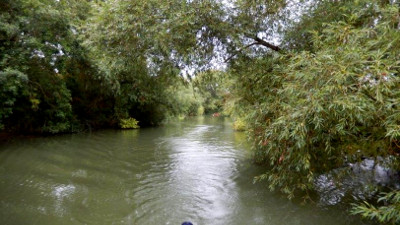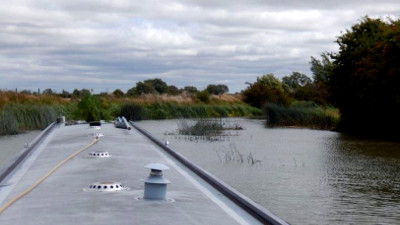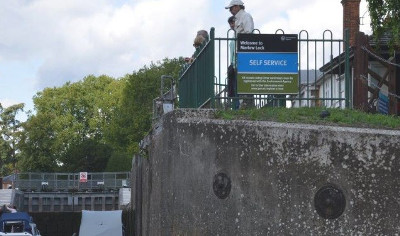WE HAVE just spent four weeks on the Thames and the Wey and the contrast between their respective conditions was interesting.

The upper Thames, above Oxford is, in my view, no longer safe to navigate because of the huge growth of vegetation, which frequently restricts the width of the river especially on the many tight bends on that section.
Many of them leave little more than width for one narrowboat, so that if a boat is coming the other way the choice is either to hit it or go into the trees. Since there are many broad beam boats about the risk is even greater and of course the vegetation also prevents you from seeing anything coming.
Many of the bends are further restricted by shoals, which are marked off by buoys whose faded colour suggests they have been there a very long time. Below Eynsham lock two thirds of the river's width is buoyed off and we met a cruiser there who had run aground on the correct side of the buoys; we were able to pull him off.

Below Oxford the vegetation is no better, but less of a problem as the river is wider and less twisty, but a lot of the bank is cluttered with continuous moorers whose curse gets worse as you get nearer London. Many of these carried no name, a requirement on the Thames, which has no numbering system, or any sign of a licence.
During our time on the river we did not see a single inspection launch moving, whereas in the past I would have seen two or three in that length of time. I know that the legal position regarding mooring on the Thames is even worse than on the canals, but it seems that the EA has simply given up.

This year we passed every lock (except Teddington) twice and some 25% were unmanned. Those that were manned often had a volunteer assistant and it seems that these are supposed to serve as the 'summer assistants'.
The trouble is that they are of their nature less reliable in their availability and have to work under the supervision of the regular keeper, so that the keeper's days off and holidays are not covered. The old system of relief keepers for this purpose seems to have been abandoned.
Every Thames lock has at least two sets of stairs set into the sides of the lock for access to the boat when the lock is empty. In the past these steps were kept carefully scrubbed by the lock keeper, but now this seems in many cases to have been abandoned and the steps are extremely slippery.
Given the EA's obsession with health and safety, I would have thought they would have spotted this accident waiting to happen. I asked a lock keeper about this and he said that they used to use a chemical to keep the stairs clean, but this has been banned and it has to be done with a pressure washer, which takes much longer and there usually isn't time to do it often enough.
Despite all that we had a very pleasant cruise on the Thames. There was not a lot of traffic and we had no difficulty finding moorings, even though it was the height of the season.
I wonder if the lack of traffic, which several lock keepers commented on, has something to do with the decline in maintenance and service levels over the last few years.
The Wey in good condition
The Wey, in the hands of the National Trust, was in very good condition. Every single lock was working properly, there were no shoals to avoid and the vegetation was under control.
Talking to the lock keeper at the entrance lock, he said that they had a staff of 20 for the river, which is about 20 miles long, and they usually kept on top of the work. Perhaps the EA could learn some lessons from the National Trust.
David Hymers
